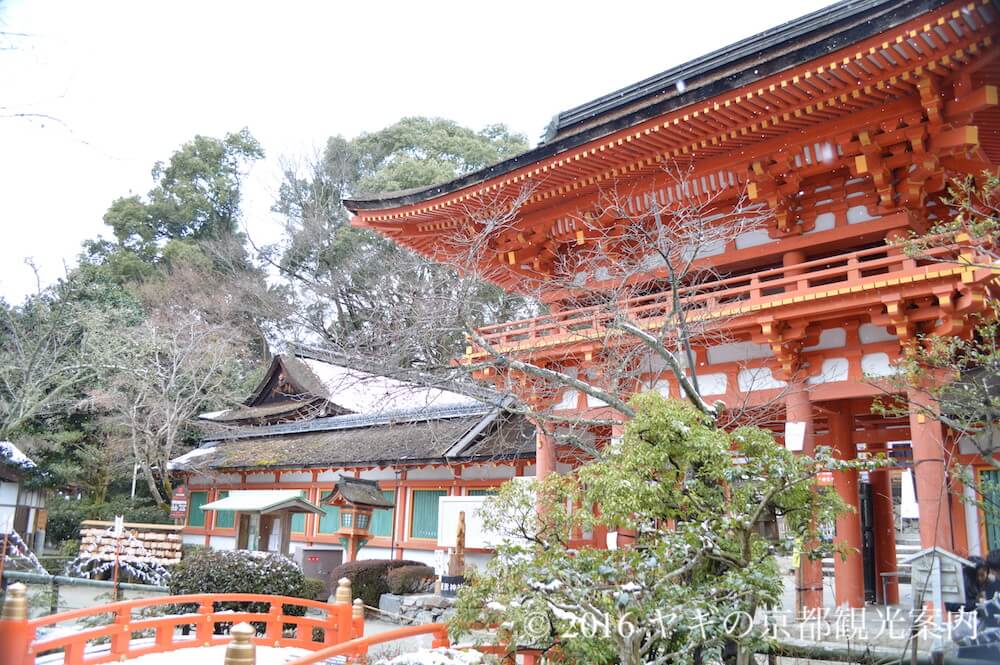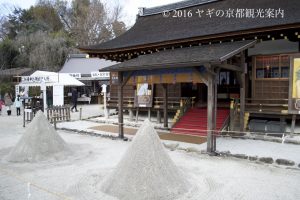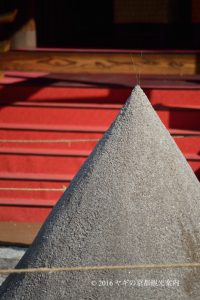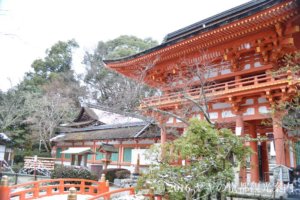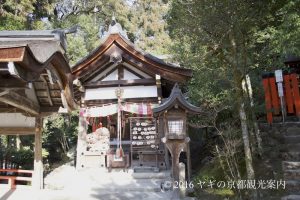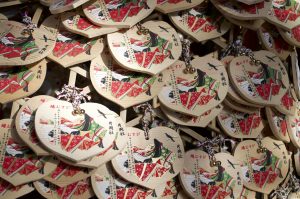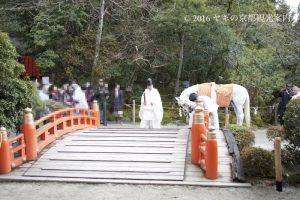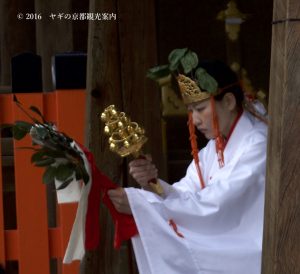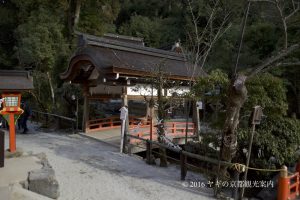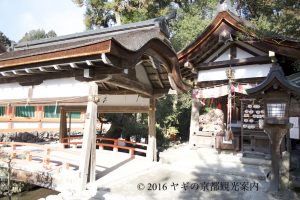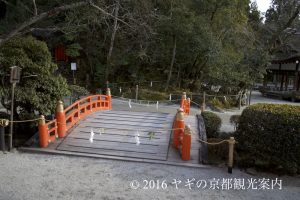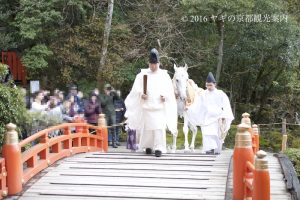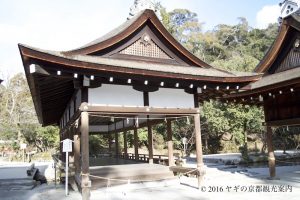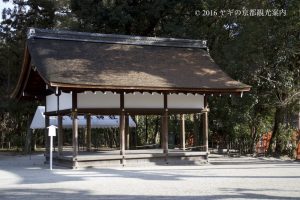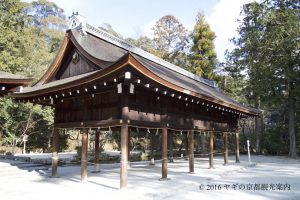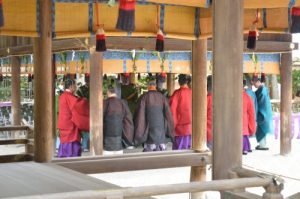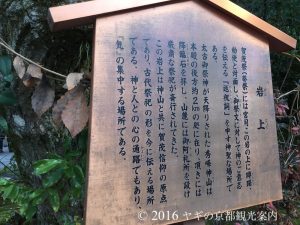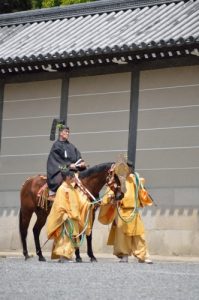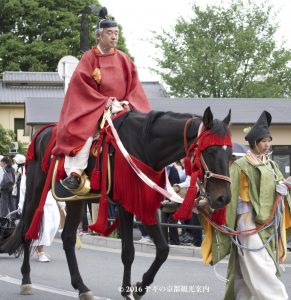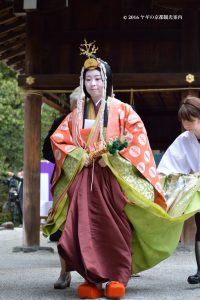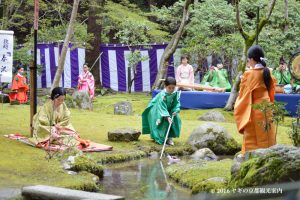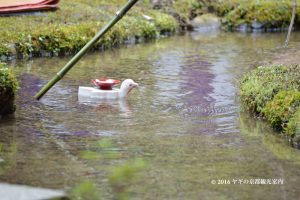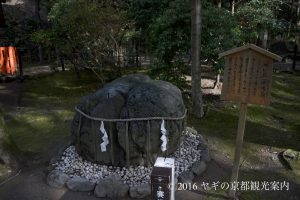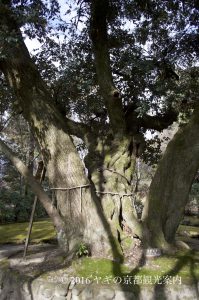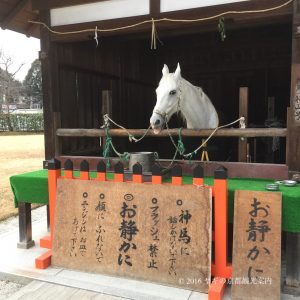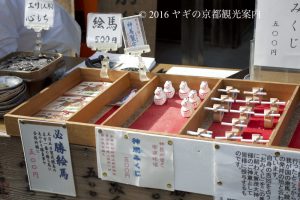Hosodono 細殿
When the emperor or “Saioh”, the priestess on behalf of the emperor paid a visit to Kamigamo shrine, they entered Hosodono right away. Today, wedding ceremony is held there.
Tate-zuna 立て砂
In front of Hosodono, there are 2 sand mountains. They stands for “Koyoma” the Deity of Kamigamo shrine descended to. This is the origin of “Mori-shio”. Mori-shio is a small mountain of salt believed to take anything evil away.
Romon (National Treasure) 楼門
Kataoka-sya a.k.a. Kayayama miko jinjya
At Kataoka-sya Tamayoribime is enshrined. It is the most imoportant sub-shrine in Kamigamo shrine because Tamayoribime is a mother the Deity of Kamigamo shrine.
The horse bows to Kataoka-sya before go to the main hall.
The construntion of the bell of Kataoka-sya is based on a bell Shinto priestess uses.
Murasaki Shikibu, the author of The Tale of Genji visited there frequently.
Kataoka-basi and Tama-basi 片岡橋と玉橋
Kataoka-basi 片岡橋
A roofed-bridge in front of Kataoka-sya.
Tama-basi 玉橋
Tama-basi is closed usually. In some occasion, priest can cross the bridge.
Hashidono a.k.a. Maidono (National Treasure) 橋殿/舞殿
We put “Hitogata” on the stream from Hashidono on “Nagoshi no harae” ritual. In the ritual, Hitogata brings anything evil away.
Gakunoya (National Treasure) 楽屋
When the Shinto and the Buddhism was fused, Gakunoya was a building for Buddhist monks.
Tsuchinoya (National Treasure) 土屋
In Tsuchinoya, priests purify themselves in a stream goes along it or hold ritual.
Ganjyo 岩上
In Kamo-sai (the official name of Aoi matsuri festival), Chokushi, the messenger of the emperor reads out “Goseimon (The message of the emperor) and a priest answers it. It is so sacred place that I cannot take picture. (Sorry, as common Japanese person, I think it is rude to take a picture of sacred place.)
In the parade of Aoi matsuri, the man in black garment plays a role of the messenger of the emperor and the man in red also plays a role of a carrier of the messege of the emperor.
Syo kei en 渉渓園
Syo kei en is a garden made for “Kyokusui-en”.
At the 2nd Sunday of April, “Kamo kyokusui no en” was held and we can see Saiho-dai of the last year.
There is a stream in Syo kei en. Composers on “Waka”, Japanese tradional poem sit along the stream. On the stream, a wooden bird brings a dish of Sake on its back.
They compose poem before the bird shows itself up in front of them.
I said “compose” poem called Waka and it may sounds strange. If you think so, see the video above. You can see what I mean. Waka sounds like music.
Negai ishi 願い石
There is a rock in the Sho kei en. In the Sho kei en, there used to be a Jingiji-temple and a small pond. The rock was found at the bottom of the pond. It stands for Yin-yang.
Mutsumi no ki 睦の木
These three trees has only one root. It stands for a family.
Kamo yamaguchi shrine 賀茂山口神社
We pray there after touching the Negai ishi.
Shinme-sya 神馬舎
In the days of old, people dedicated a horse called “Shinme” to shrine. These days, we seldom see Shinme horse at shrine. Kamigamo shrine keeps a Shinme named “Kohyama-go” (His real name is Médaillon). We meet him at week-ends or on special occasion.
We can have “Shinme” Omikuji-fortune telling.
Feed him with carrot, shall we?

